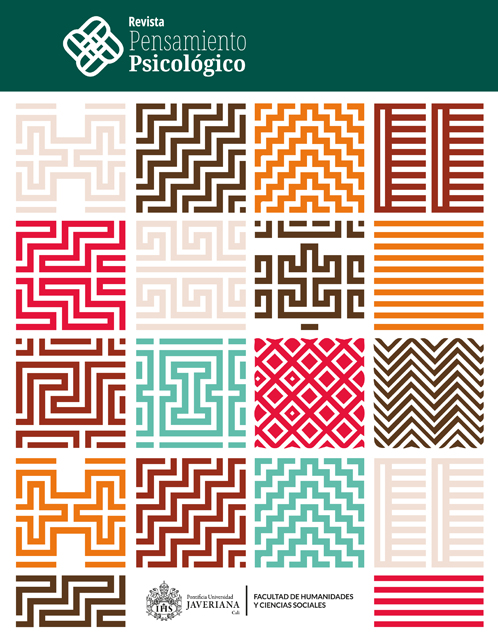Mealtime as a teaching/learning space: What do children learn by eating at school
Main Article Content
Abstract
Objetive. This study explores the school mealtime as a cultural teaching/learning space and analyzes the areas of participation that are negotiated, the roles played by adults and children and their changes over time. Method. The participants were 10 boys and 5 girls between 5 and 6 years old and their teacher from a private school in Madrid, Spain. Following an ethnographic approach, we observed and video-recorded the mealtime twice a week along 5 months. Interviews were conducted with the teacher, the counselor and the school head, and the documentation about the mealtime practice was analyzed. Results. Using the triangulation of the information we identified 18 negotiation areas that were distributed in four moments of the practice: planning, preparation of the scenario, mealtime, and the clean-up time. For each moment, the levels of participation of the children and their change were identified. Conclusions. It is discussed how the children participation and the changing roles favors the appropriation of cultural rules about the mealtime practice, while opening spaces for the development and learning of cognitive/communicative and emotional skills that allow children to become increasingly autonomous self-regulated when participating in the mealtime practice.
Downloads
Article Details

This work is licensed under a Creative Commons Attribution 4.0 International License.
References
Earl, L. (2018). Schools and food education in the 21st century. Routledge
Estrada, L. F. (2019). Materialidad y prácticas educativas en la escuela infantil con niños/as entre 1-2 años: una aproximación cultural, semiótica y pragmática [Tesis doctoral, Universidad Autónoma de Madrid]. Repositorio UAM. http://hdl.handle.net/10486/688559
Fossgard, E., Wergedahl, H., Bjørkkjær, T., & Holthe, A. (2019). School lunch—Children’s space or teachers’ governmentality? A study of 11-year olds’ experiences with and perceptions of packed lunches and lunch breaks in Norwegian primary schools. International Journal of Costumer Studies, 43(2), 218-226. https://doi.org/10.1111/ijcs.12501
Ishiguro, H. (2016). How a young child learns how to take part in mealtimes in a Japanese day-care center: a longitudinal case study. European Journal of Psychology of Education, 31, 13-27.https://doi.org/10.1007/s10212-014-0222-9
James, A., Kjørholt, A. T., & Tingstad V. (2009). Introduction: Children, Food and Identity in Everyday Life. In A. James, A. T. Kjørholt & V. Tingstad (Eds.), Children, Food and Identity in Everyday Life (pp. 1-13). Palgrave Macmillan.
Karrebæk, M. S. (2013). Lasagna for Breakfast. The Respectable Child and Cultural Norms of Eating Practices in A Danish Kindergarten Classroom. Food, Culture and Society, 16(1), 85-106https://doi.org/10.2752/175174413X13500468045443
Kontopodis, M. (2013). Eating Christmas cookies, whole-wheat bread and frozen chicken in the kindergarten: doing pedagogy by other means. Zeitschrift für Erziehungswissenschaft, 16(S2), 123-138. https://doi.org/10.1007/s11618-013-0412-2
Lalli, G. (2022): The school restaurant: ethnographic reflections in researching children’s food space. International Journal of Qualitative Studies in Education, 35(1), 48-57. https://doi.org/10.1080/09518398.2020.1797210
Lave, J., & Wenger, E. (1991). Situated learning: Legitimate peripheral participation. Cambridge University Press.
Ochs, E., & Shonet, M. (2006). The Cultural Structuring of Mealtime Socialization. New directions for child and adolescent development, 111, 34-49. https://doi.org/10.1002/cd.154
Pike, J. (2010). ‘I don't have to listen to you! You're just a dinner lady!’: power and resistance at lunchtimes in primary schools. Children's Geographies, 8(3), 275-287. https://doi.org/10.1080/14733285.2010.494867
Punch, S., McIntosh, I., & Emond, R. (2010). Children's food practices in families and institutions, Children's Geographies, 8(3), 227-232. https://doi.org/10.1080/14733285.2010.494861
Rodríguez, C., Benassi, J., Estrada, L., & Alessandroni, N. (2017). Early Social Interactions with people and objects. In A. Slater & G. Bremner (Eds.), An introduction to developmental psychology (3rd ed., pp. 213-258). Wiley-Blackwell.
Rodríguez, C., Estrada, L., Moreno-Llanos, I., & De Los Reyes, J. L. (2017). Executive functions and educational actions in an infant school: private uses and gestures at the end of the first year. Estudios de Psicología, 38(2), 385-423. http://dx.doi.org/10.1080/02109395.2017.1305061
Rogoff, B. (2003). The Cultural Nature of Human Development. Oxford University Press.
Rosa, A., & Valsiner, J. (2018). The Cambridge Handbook of Sociocultural Psychology (2 ed.). Cambridge University Press.
Torralba, J. A., & Guidalli, B. A. (2015). Examining Children´s Food Heritage in Spanish Schools: Process of Learning to Become ¨Eaters-in-context¨. Antopology of food, 9. https://journals.openedition.org/aof/7802
Valsiner, J. (2007). Culture in minds and societies: Foundations of cultural psychology. SAGE Publications India Pvt. Ltd.
Valsiner, J. (2014). An invitation to cultural psychology. Sage Publications Ltd.

